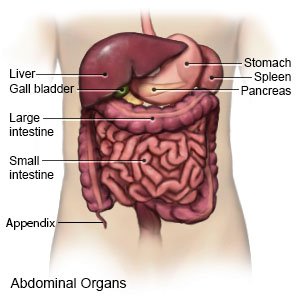Liver Resection
Medically reviewed by Drugs.com. Last updated on Aug 4, 2025.
Liver resection is surgery to remove part of your liver.
 |
WHILE YOU ARE HERE:
Before your surgery:
- Informed consent is a legal document that explains the tests, treatments, or procedures that you may need. Informed consent means you understand what will be done and can make decisions about what you want. You give your permission when you sign the consent form. You can have someone sign this form for you if you are not able to sign it. You have the right to understand your medical care in words you know. Before you sign the consent form, understand the risks and benefits of what will be done. Make sure all your questions are answered.
- Antibiotics help prevent infection from bacteria. You may receive antibiotics before and after your surgery.
- General anesthesia will keep you completely asleep and free from pain during surgery.
- Monitoring:
- A heart monitor (ECG or EKG) is used to record your heart's electrical activity. Sticky pads will be placed on your skin to record the activity.
- A pulse oximeter is a device that measures the amount of oxygen in your blood. A cord with a clip or sticky strip is placed on your finger, ear, or toe. The other end of the cord is hooked to a machine.
- An arterial line is a tube placed into an artery to measure your blood pressure. It may also be used to take blood.
- A central venous pressure (CVP) line is a tube put in a vein near your collarbone, or in your neck or groin. The CVP line can monitor the fluid and pressure in your blood vessels. The CVP line also may be used to give medicines or fluids.
- A Foley catheter is a tube placed into your bladder to drain your urine into a bag.
- A nasogastric (NG) tube will be put into your nose and down into your stomach. The tube may be attached to a suction machine used to keep your stomach empty.
- A blood transfusion may be needed during surgery if you lose a large amount of blood. Ask your healthcare provider for more information about blood transfusions.
During your surgery:
- Your surgeon will make an incision in your abdomen just below your ribs. If the right side of your liver is being removed, your gallbladder will also be taken out. Lymph nodes will be removed if they look diseased, and sent to a lab for tests.
- Your surgeon will remove the diseased part of your liver. Blood flow through the remaining part of your liver will be checked. Your surgeon will stop any areas of bleeding.
- Your incision will be closed with stitches or tissue glue and covered with a bandage. The liver tissue that was removed may be sent to a lab for tests.
Related medications
After your surgery:
You will be taken to a room where you can rest until you are fully awake. Do not get out of bed until your healthcare provider says it is okay. A healthcare provider may remove your bandages soon after your surgery to check your wound. When healthcare providers see that you are not having any problems, you will be taken to a hospital room.
- Medicines may be given to prevent or treat nausea or pain.
- Take deep breaths and cough 10 times each hour. This will decrease your risk for a lung infection. Take a deep breath and hold it for as long as you can. Let the air out and then cough strongly. Deep breaths help open your airway. You may be given an incentive spirometer to help you take deep breaths. Put the plastic piece in your mouth and take a slow, deep breath, then let the air out and cough. Repeat these steps 10 times every hour.
- You will be helped to walk around after surgery. Movement helps prevent blood clots. You may also be given compression stockings to prevent blood from pooling in your legs.
RISKS:
- During surgery, your blood vessels may be damaged. You may lose large amounts of blood. Air may also enter your blood vessels. This could be life-threatening if it enters your heart.
- After surgery, bile may leak from your bile ducts into your abdomen. The fluids used during your surgery may build up in your abdomen and lungs. Fluid buildup can make it hard to breathe. Even if the cancer is removed, it may come back. You may need another liver resection to remove the cancer. An abscess (pus pocket) may form in your abdomen. You may get a life-threatening blood clot. Your lungs and heart may not function as they should, and you may have a heart attack. The remaining area of your liver may fail. This can become life-threatening.
CARE AGREEMENT:
You have the right to help plan your care. Learn about your health condition and how it may be treated. Discuss treatment options with your healthcare providers to decide what care you want to receive. You always have the right to refuse treatment.© Copyright Merative 2025 Information is for End User's use only and may not be sold, redistributed or otherwise used for commercial purposes.
The above information is an educational aid only. It is not intended as medical advice for individual conditions or treatments. Talk to your doctor, nurse or pharmacist before following any medical regimen to see if it is safe and effective for you.
Further information
Always consult your healthcare provider to ensure the information displayed on this page applies to your personal circumstances.
